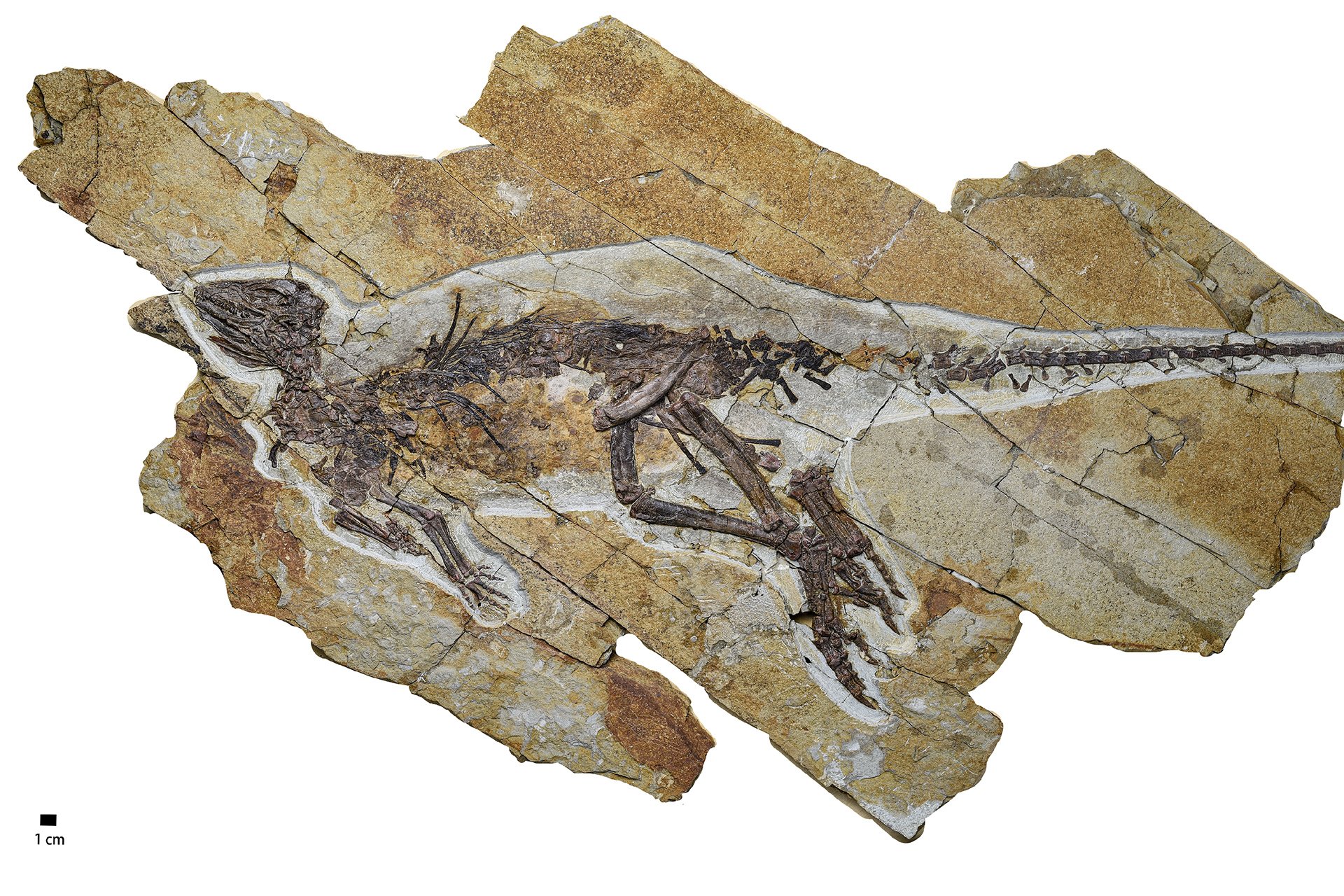A recent discovery in northeastern China has revealed a dinosaur that may have produced sounds similar to bird chirps, suggesting that the origins of birdsong could date back much further than previously believed. The fossil, named Pulaosaurus qinglong, is about 163 million years old and was found in Hebei Province. An international team of researchers documented their findings in a paper published in the journal PeerJ.
This remarkable specimen measures approximately 28 inches (72 centimeters) and is largely intact, allowing scientists a rare glimpse into its anatomy. The fossil’s throat structure exhibits characteristics reminiscent of modern birds, which is a significant aspect of this finding. According to Xing Xu, a paleontologist at the Chinese Academy of Sciences and a co-author of the study, the preservation of such delicate bone structures is uncommon. He explained, “Even when you have a dinosaur skeleton preserved, you don’t always have these isolated bones preserved with other skull elements.”
The vocal organs of vertebrates serve to protect the airway and generate sounds, ranging from basic noises such as hisses and grunts to more complex calls. Most reptiles today possess vocal structures made of cartilage, which limits their vocal capabilities. In contrast, birds have evolved intricate, bony vocal organs that enable a diverse range of sounds. The throat of Pulaosaurus appears to fall between these two extremes, suggesting a more sophisticated vocal ability than that found in most reptiles.
The research team noted similarities between Pulaosaurus and another dinosaur, Pinacosaurus, a type of ankylosaur known for its substantial bony larynx. This anatomical feature may have allowed Pinacosaurus to produce sounds akin to birdlike chirps and tweets. Despite being separated by millions of years of evolution, the similarities in vocal structure indicate a potential shared lineage in vocal capabilities among these dinosaur species.
Researchers believe that Pulaosaurus existed during the late Jurassic period and belonged to a group of dinosaurs that eventually gave rise to the “duck-billed” dinosaurs known as hadrosaurs. Interestingly, both Pulaosaurus and Pinacosaurus are not part of the lineage that directly led to modern birds. This raises the possibility that their vocal features may have developed independently. Nevertheless, the presence of analogous structures in such distinctly different species hints at a chirpy ancestry among dinosaurs.
These findings imply that the origins of birdsong could trace back to creatures that roamed the earth over 230 million years ago. However, the precise timeline and mechanisms behind the evolution of the modern bird vocal organ, known as the syrinx, remain unclear. Further research is necessary to unravel the complexities of dinosaur vocalization and its evolutionary significance.
The work of this international team highlights the ongoing efforts to understand the connections between ancient dinosaurs and modern birds. As more fossils are unearthed and studied, our comprehension of the evolutionary history of avian communication may continue to deepen, offering new insights into how these remarkable adaptations emerged over millions of years.
